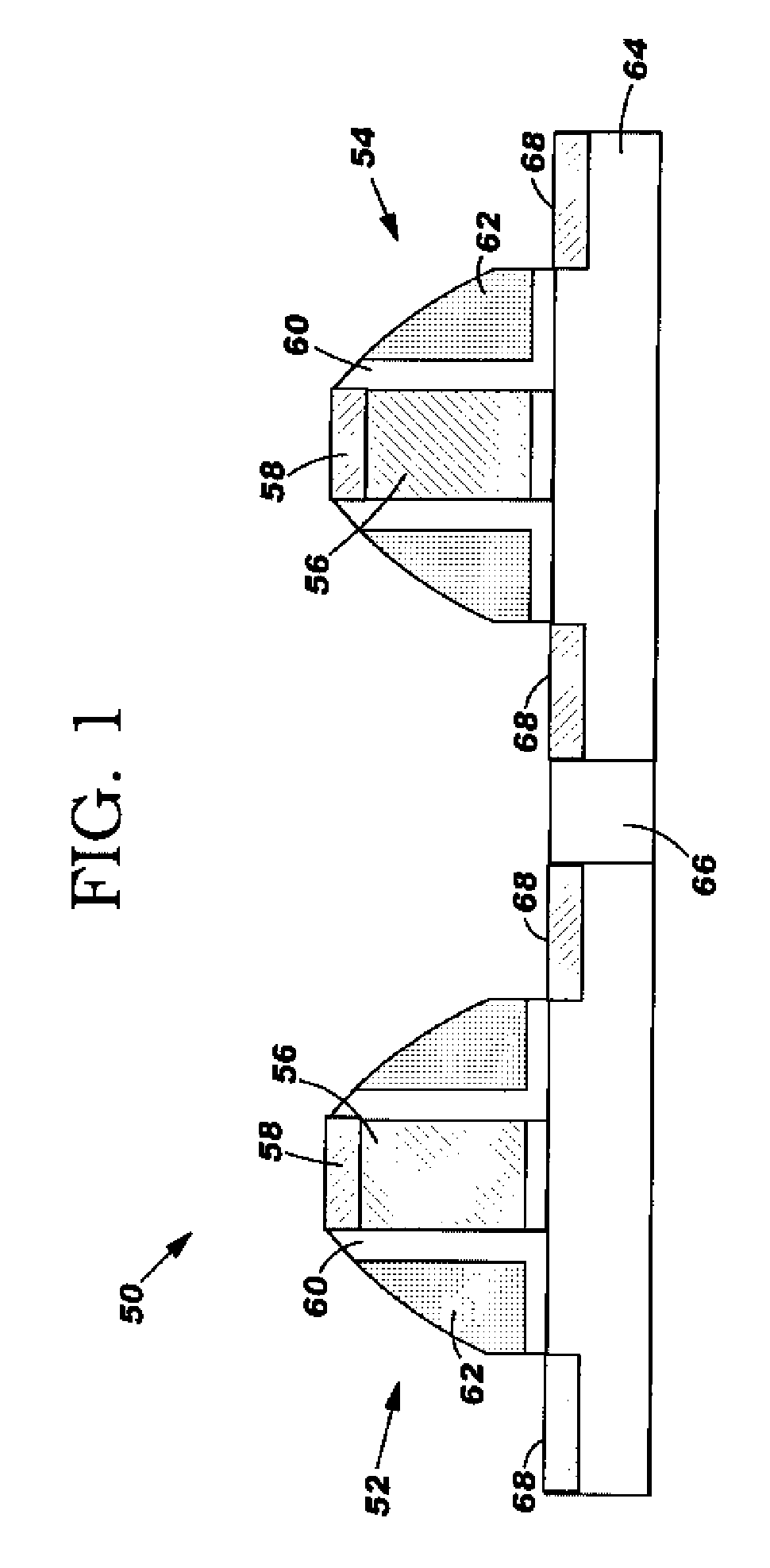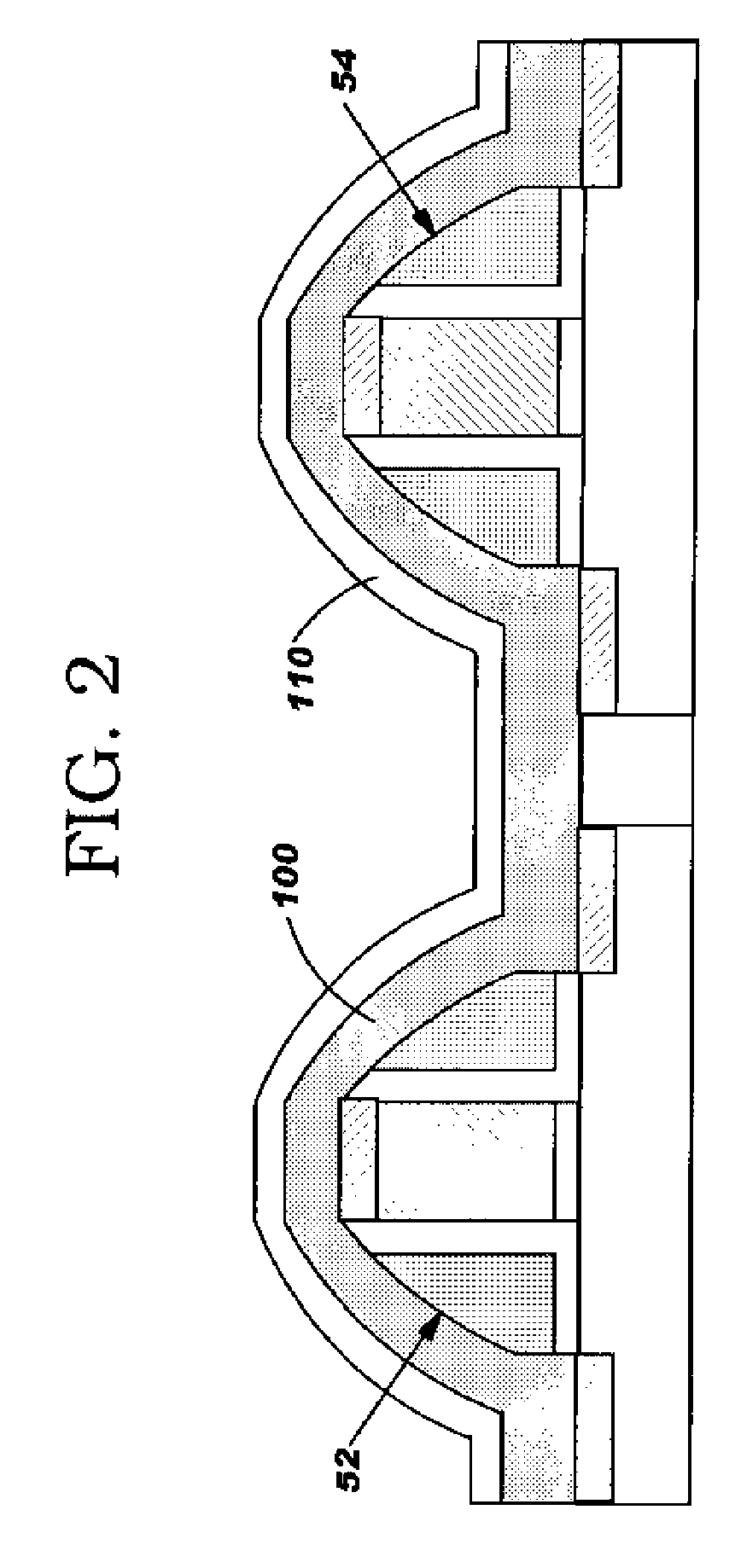Dual-hybrid liner formation without exposing silicide layer to photoresist stripping chemicals
a dual-hybrid, stripping technology, applied in the direction of basic electric elements, semiconductor devices, electrical equipment, etc., can solve the problems of reducing pfet performance, degrading electron mobility, and reducing hole mobility, so as to prevent the exposure of a suicide layer and good lateral dimension control
- Summary
- Abstract
- Description
- Claims
- Application Information
AI Technical Summary
Benefits of technology
Problems solved by technology
Method used
Image
Examples
Embodiment Construction
[0015] With reference to the accompanying drawings, FIG. 1 shows an initial structure 50 for a method of fabricating a semiconductor device including a dual-hybrid liner. Initial structure 50 includes a p-type field effect transistor (PFET) 52 and an n-type field effect transistor (NFET) 54. PFET 52 and NFET 54 each include a gate body 56 having a silicide cap 58, a silicon dioxide (SiO2) spacer 60 and a silicon nitride (Si3N4) spacer 62 formed over a substrate 64. A shallow trench isolation (STI) 66 separates the FETs 52, 54. An underlying silicide layer 68 is provided in an upper region of substrate 64. It should be recognized that the teachings of the invention are not limited to this initial structure. For example, while substrate 64 is illustrated as bulk silicon, it could also be provided in a silicon-on-insulator (SOI) form.
[0016] Turning to FIG. 2, a first step of the method includes depositing a first silicon nitride layer 100 (hereinafter “first SiN layer”) over PFET 52 a...
PUM
 Login to View More
Login to View More Abstract
Description
Claims
Application Information
 Login to View More
Login to View More - R&D
- Intellectual Property
- Life Sciences
- Materials
- Tech Scout
- Unparalleled Data Quality
- Higher Quality Content
- 60% Fewer Hallucinations
Browse by: Latest US Patents, China's latest patents, Technical Efficacy Thesaurus, Application Domain, Technology Topic, Popular Technical Reports.
© 2025 PatSnap. All rights reserved.Legal|Privacy policy|Modern Slavery Act Transparency Statement|Sitemap|About US| Contact US: help@patsnap.com



